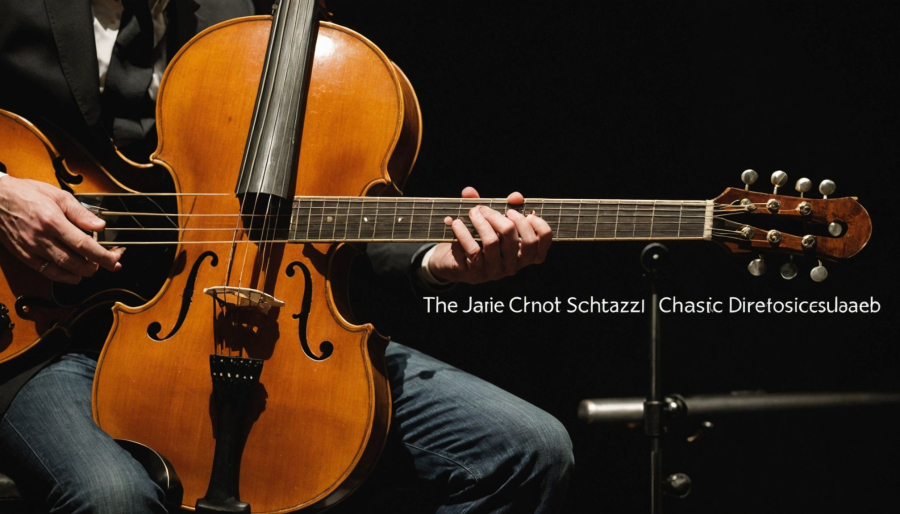Uncover the patterns and theory behind the timeless chord progressions that define classic jazz standards. Whether you're a beginner seeking clarity or an experienced musician refining your artistry, understanding these musical structures opens new doors to improvisation and creative interpretation. Gain practical insights and real-world examples that demystify jazz harmony, so you can confidently analyze, teach, or play classic tunes with depth and style.
Understanding Chord Progressions in Classic Jazz Standards
Behind every memorable jazz tune, chord progressions provide the structural framework, giving each piece its emotional shape and harmonic character. When musicians learn jazz standards, they discover how classic jazz chord progressions—like the ever-present ii-V-I—create both tension and resolution, establishing the backbone of the jazz repertoire.
Essential jazz harmony principles involve using extended chords, altered tones, and techniques like chord substitution. These tools introduce color, movement, and expressiveness, distinguishing jazz from other music genres. The evolution of jazz harmony, from early swing to more modern idioms, reflects both historical influences and innovative approaches developed by jazz greats.
Analyzing chord sequences from established standards helps musicians recognize patterns, anticipate changes, and internalize the harmonic language of jazz. Educators and students benefit deeply from exploring these progressions, as this analysis strengthens both improvisational skill and compositional understanding. Connecting theory to actual songs builds a more fluent, confident approach to navigating the jazz standards repertoire.

Core Progressions and Harmony in Jazz Standards
The ii-V-I Progression as the Backbone of Jazz
The ii V I progression is foundational in jazz progression theory. This sequence—where the ii minor chord moves to the V dominant, then resolves to the I major—defines harmonic movement in countless jazz standards. Guitarists and pianists focus on internalizing these patterns, as mastery of ii V I progression leads to greater understanding of jazz harmony for guitarists and jazz harmony for pianists.
Variations and Extensions in Jazz Chord Progressions
Jazz chord voicings often incorporate extensions and alterations, which give jazz standard chord progression patterns their distinctive color. Typical jazz arrangements involve not just basic triads but also seventh, ninth, and altered dominants. These techniques support the rich traditions of both jazz harmony for guitarists and jazz harmony for pianists.
Typical Chord Sequences in Classic Jazz Repertoire
Famous jazz standards chord structures feature recurring formulas like “Rhythm Changes” and “blues progressions,” not just the ii V I progression. Jazz standard chord progression patterns provide a framework, encouraging exploration through substitution and reharmonization—key tenets of jazz progression theory.
Analysis of Iconic Jazz Standards and Their Chord Progressions
Annotated Examples from Well-Known Jazz Standards
The ii V I progression underpins a vast array of classic jazz tunes. Common jazz chord sequences like Gm7–C7–Fmaj7 guide much of the structure in the jazz standards repertoire. Analyzing harmony in jazz standards, it’s clear that the interaction of the jazz standard melody and chords creates momentum and opportunity for improvisation. Chord melody jazz standards, such as "Misty," feature extended chords and altered dominants, integrating more color into their harmonic language.
Notable Blues-Based and Rhythm Changes Progressions
Jazz blues progressions, notably in classic jazz tunes like "Blue Monk," utilize a structured twelve-bar form. Rhythm changes chord progression, based on "I Got Rhythm," uses cycles of ii V I progression with frequent turnaround chords. These patterns are central in a jazz standards learning guide, focusing on learning methods and comping techniques.
Modal and Minor Progressions in Essential Jazz Tunes
Minor key progressions in jazz, such as the minor ii v i jazz progression in tunes like "Anthropology," add rich color and mood. Modal jazz progressions, seen in standards like "So What," trade traditional movement for static harmony, emphasizing the relationship between the jazz standard melody and chords.
Advanced Approaches and Reharmonization in Jazz
Techniques for Reharmonization and Chord Substitution
Chord substitution in jazz expands harmonic possibilities, utilizing substitutes like tritone or relative minor swaps for common turnarounds. For example, replacing a standard dominant with an altered dominant—where scale degrees are sharpened or flattened—adds tension and surprise. Diminished chords in jazz often function as passing chords, smoothly connecting progressions such as ii–V–I. These tools are central to jazz reharmonization techniques.
Employing Modal Interchange, Altered Dominants, and Diminished Passing Chords
Modal interchange in jazz borrows chords from parallel modes to enrich harmonic color, such as using a iv chord from the minor in a major key context. Integrating diminished chords in jazz between diatonic changes heightens suspense. Musicians favor altered dominants—like the b9 or #5—to increase expressive density and facilitate smoother jazz modulation techniques.
Improv and Practice Tips for Mastering Complex Progressions
Isolate sections containing chord substitution in jazz or modal interchange. Practice reharmonization examples classic jazz with metronome and record improvisations to analyze use of jazz chord extensions explained and turnaround chords jazz. Repeat with varied jazz reharmonization techniques to internalize advanced harmony.
